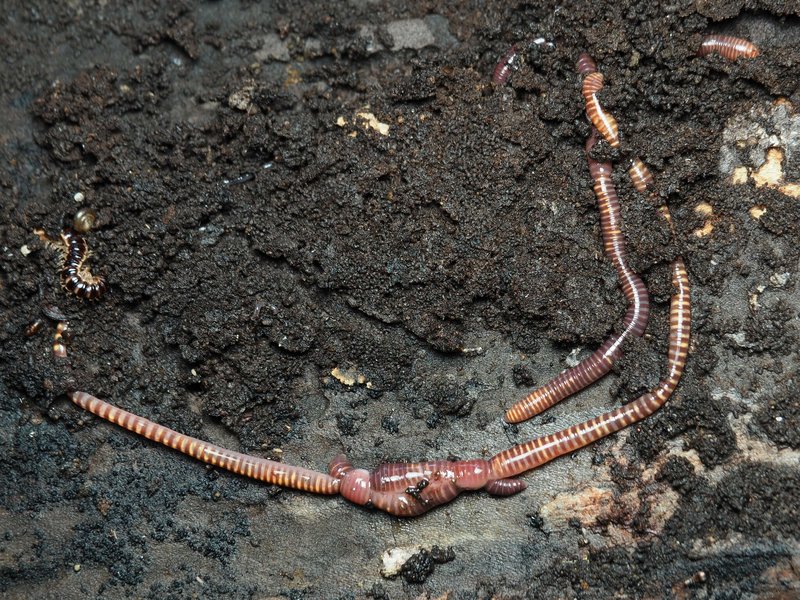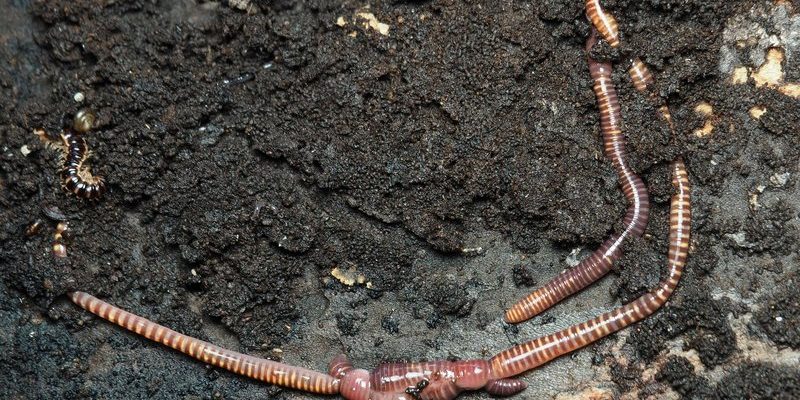
You might be wondering, “Where do these red wigglers like to hang out in the wild?” Well, let’s dig into their habitat preferences. Just like we prefer cozy spaces with the right temperature and amenities, red wigglers have their own ideal environments where they thrive best. In this article, we’ll explore their habitat needs, what makes them tick, and how they contribute to the environment.
Understanding Red Wigglers: Who Are They?
Red wigglers, scientifically known as *Eisenia fetida*, belong to a family of earthworms. Unlike your typical garden worm, which prefers deeper soil, red wigglers tend to live closer to the surface. This is because they love rich, organic material found on top of the ground. Think of them as the night owls of the worm world, favoring dark, moist places where there’s plenty of food.
You might find red wigglers thriving in compost piles, manure, and even beneath leaf litter in forests. They have a key role in breaking down food scraps and other organic matter, making them essential for soil health. Their small size (usually around 3 to 4 inches long) and vibrant reddish-brown color make them easy to spot when you’re digging around in your backyard compost.
They’re also known for being incredibly resilient. Red wigglers can tolerate a range of temperatures and moisture levels, but there are still some ideal conditions that make them feel right at home.
Preferred Environments: What Do Red Wigglers Need?
If you were to set out to create the perfect home for red wigglers, you’d want to keep a few things in mind. Moisture levels are crucial; these worms thrive in damp environments but can drown in waterlogged areas. Ideally, the soil should be moist enough to keep them hydrated while still allowing for good drainage.
Temperature is another key factor. Red wigglers prefer temperatures between 55°F and 77°F (about 13°C to 25°C). You can think of this range as their comfort zone. If temperatures drop too low or rise too high, they can become stressed, which might affect their activity level and overall health.
Lastly, food availability plays a massive role. Red wigglers feast on decomposing organic matter, so areas rich in plant material are right up their alley. This includes gardens, farms, and even forests where dead leaves and organic waste build up.
Soil Composition and Its Impact
Let’s talk about soil because it’s another huge player when it comes to the habitat preferences of red wigglers. They flourish in loose, crumbly soil that allows them to move freely. Compacted soil? Not so much.
Organic matter is critical. The more organic material in the soil, the more likely you are to find red wigglers hanging around. This can be anything from decaying leaves to food scraps. When these worms munch on this material, they help break it down into nutrient-rich compost, which is essential for plant growth.
You can find red wigglers in a variety of soil types, but they seem to be particularly fond of sandy loam. This type of soil has a good balance of sand, silt, and clay, making it easy for them to burrow and find food. It also drains well, preventing waterlogging and supporting the moisture levels they love.
Seasonal Changes: How do They Adapt?
You might wonder how red wigglers deal with changing seasons. They are mainly active in spring and fall when the temperatures are just right. In summer, they burrow deeper into the ground to escape the heat. During particularly harsh winters, they can enter a state called hibernation or become less active to survive.
Interestingly, these worms can sense temperature changes, which helps them move to safer depths in the soil. Less activity doesn’t mean they aren’t doing anything, though; they’re just conserving energy until conditions improve.
Think of them as little survival experts, adjusting to their environment in a way that keeps them safe and healthy.
Red Wigglers and Ecosystem Health
Red wigglers may be small, but their impact on the ecosystem is significant. By breaking down organic material, they help improve soil structure and nutrient availability. Healthy soil translates to healthier plants, which benefits a variety of wildlife, from birds to larger mammals.
You might not see them at work, but they’re like the behind-the-scenes crew of nature, ensuring everything runs smoothly. They also play a role in the composting process that supports sustainable gardening and farming practices.
By encouraging red wigglers to thrive in your garden, you’re not just taking care of these worms; you’re investing in a healthier ecosystem overall.
How to Create a Red Wiggler-Friendly Habitat
If you’re inspired to create a home for red wigglers, you’re in luck! It’s pretty simple. Here are some tips:
- Choose the right location: Look for a shady spot in your garden where there’s plenty of organic matter.
- Add organic matter: Pile up kitchen scraps, leaf litter, and garden waste to give them a tasty buffet.
- Monitor moisture levels: Keep the soil moist but not soggy. If it dries out, sprinkle some water to hydrate.
- Consider temperature: In hot summer months, try to provide some shade to help them stay cool.
Creating this type of habitat not only benefits the worms but also enriches your garden soil, leading to healthy plants and a flourishing ecosystem.
Red wigglers may be tiny, but their role in nature is massive. Understanding their habitat preferences helps us appreciate how these little creatures contribute to our environment and soil health. By fostering conditions that support their growth, we can also promote sustainability and encourage vibrant ecosystems.
So next time you dig in the dirt, remember: there’s a whole world of red wigglers working tirelessly to keep our planet healthy. Let’s give them a high five (or more like a wiggle) for all the good they do!

